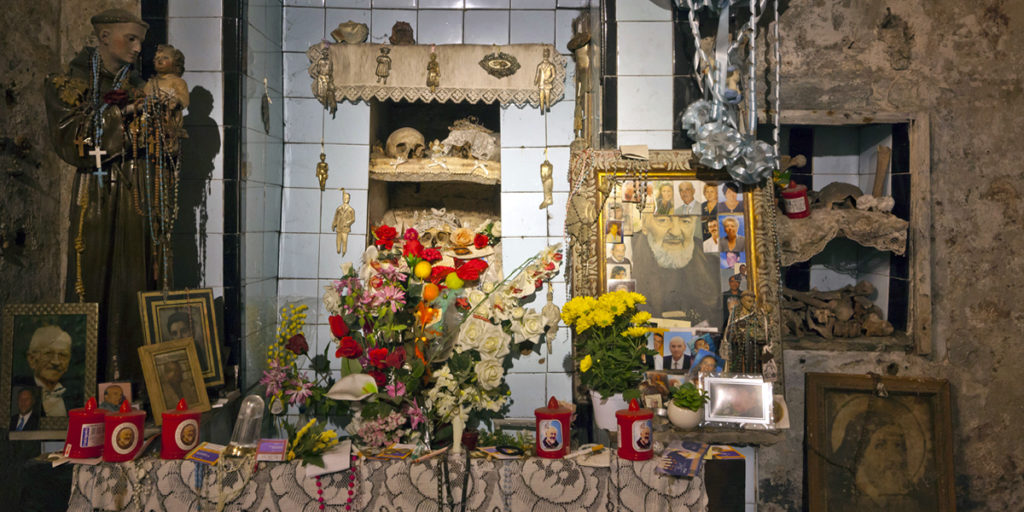
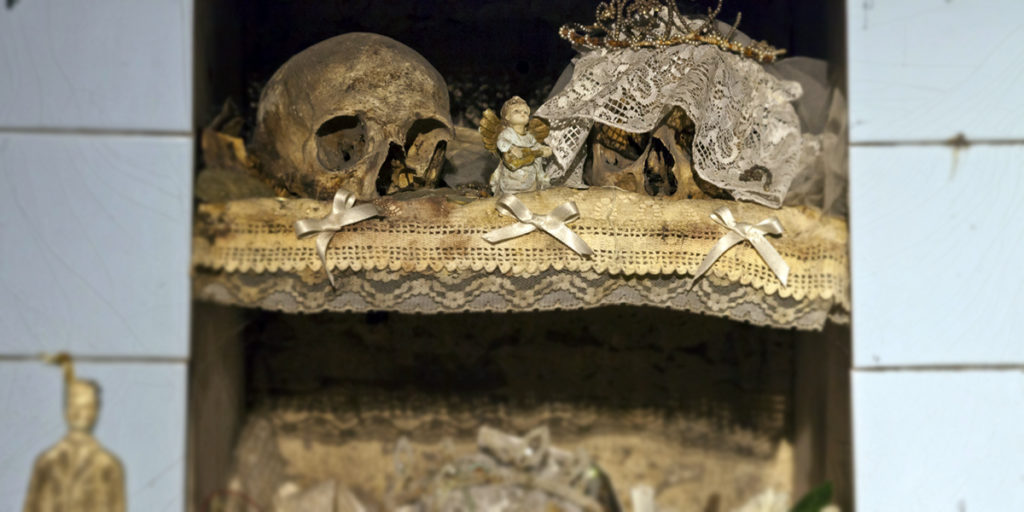
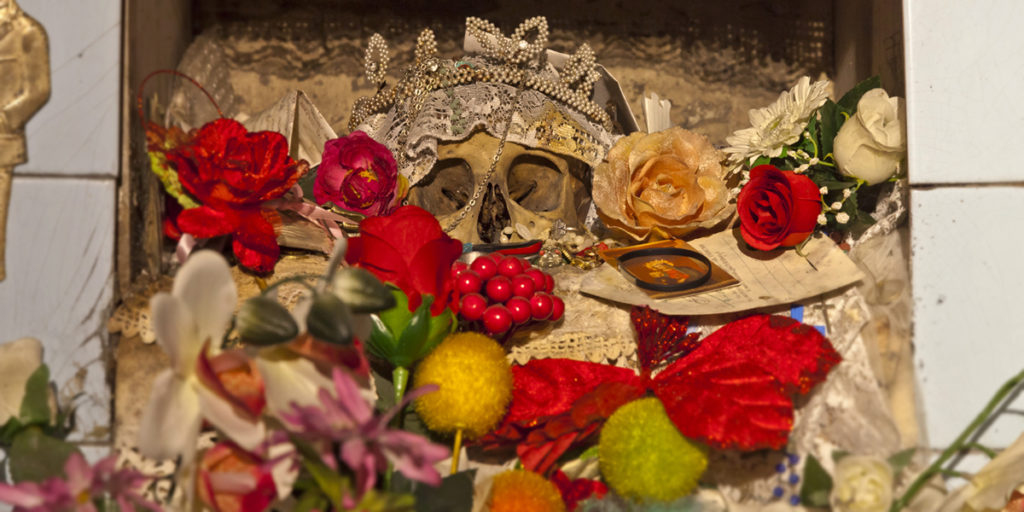
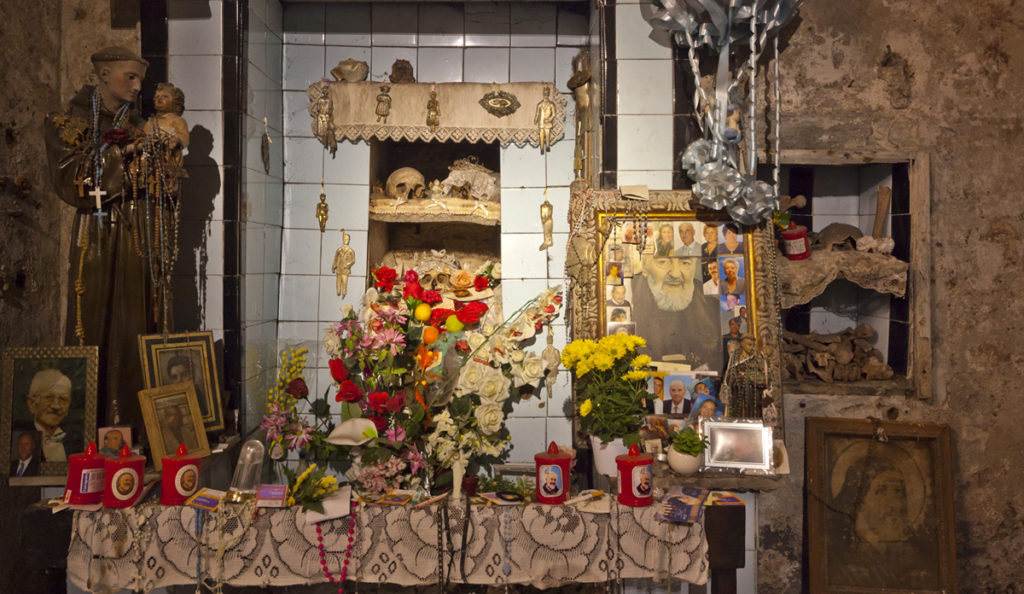
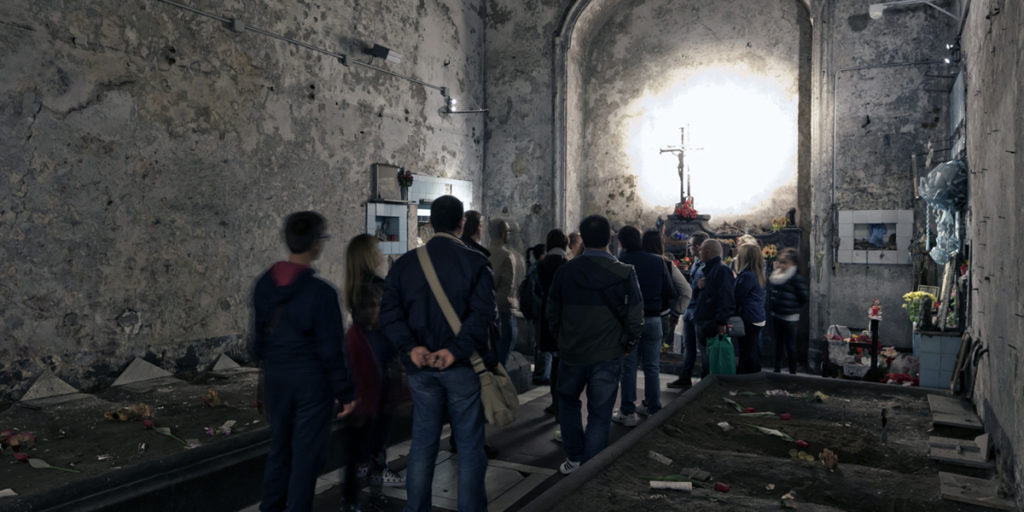
The ancient cult of the Purgatory Souls, guarded for centuries in the underground of the seventeenth-century Church of Santa Maria of the souls of Purgatory in Arco, arose spontaneously, at the beginning of 1600, when the new counter-reformation church proposed the care of the souls of the dead as a of the principal religious practices to establish, through prayers and masses in suffrage, a liturgical link between the living and the dead. The cult of souls had been widely supported by the Catholic Church that identified in it a way to collect offers and donations so much that it became the obligation of every good believer to worry about leaving a will that indicates the cadence of masses and prayers in suffrage of the deceased. The living, as a means to atone for earthly sins, were concerned with fostering the ascent of souls in Paradise and assuring them of the coolness of the flames of Purgatory during the period of tribulation.
But in Naples the direct relationship with the soul goes further, bypasses the time limit of life and penetrates what goes beyond life through rituals where popular pietas shows all its deepest facets. Objects of worship become anonymous souls, those abandoned and nameless, those whose bodies, which had not benefited from the rites of a mourning, were buried in mass graves. The relationship is established through the adoption of a skull, which according to tradition is the seat of the soul, which is chosen, cared for, looked after and hosted in special niches. The pezzentella soul (from the Latin petere: asking to obtain), anonymous or abandoned soul, invokes the refrisco, the alleviation of the sentence, and the person who adopted it, the person in life, asks for grace and assistance.
From a timeless time popular piety takes care of nameless skulls identifying them with the souls of Purgatory, souls whose abandon would continue in the other life if not for the compassionate care of the devotees. In the hypogeum of the Purgatory Complex in Arco, scarabattoli, niches, little altars, tell an ancient story, where faith, prayers and hopes are mixed. Small lamps, flowers, rosaries, small objects, messages written and placed between the folds of the cushions where the skulls rest, testify to the care, love and trust placed in these ancient souls; among these, that of Lucia, is the most loved soul. The skull with the bridal veil, adorned with a precious crown, is kept next to a pair of skulls that, in the popular imagination, represent the servants of the young girl, a young princess who died very young immediately after the wedding. To this soul the popular tradition has dedicated a small altar electing her as protector of the brides and mediator for prayers and invocations.
The ancient cult, survived by war and famines, manifests itself over time in all its intensity, so much so that in 1969 Cardinal Ursi forbade it because it was now too widespread to resort to anonymous remains, rather than to the saints. Even today, the mutual aid relationship is never interrupted it ‘night it’ day: the grates that connect the street and underground enable voices, the cries, the prayers to reach at any time the skull, which enjoys the protection, while a thought, a flower, a lit candle, support in the hard fight for Paradise the souls of Purgatory generously welcomed in the vast Underground of the church.
